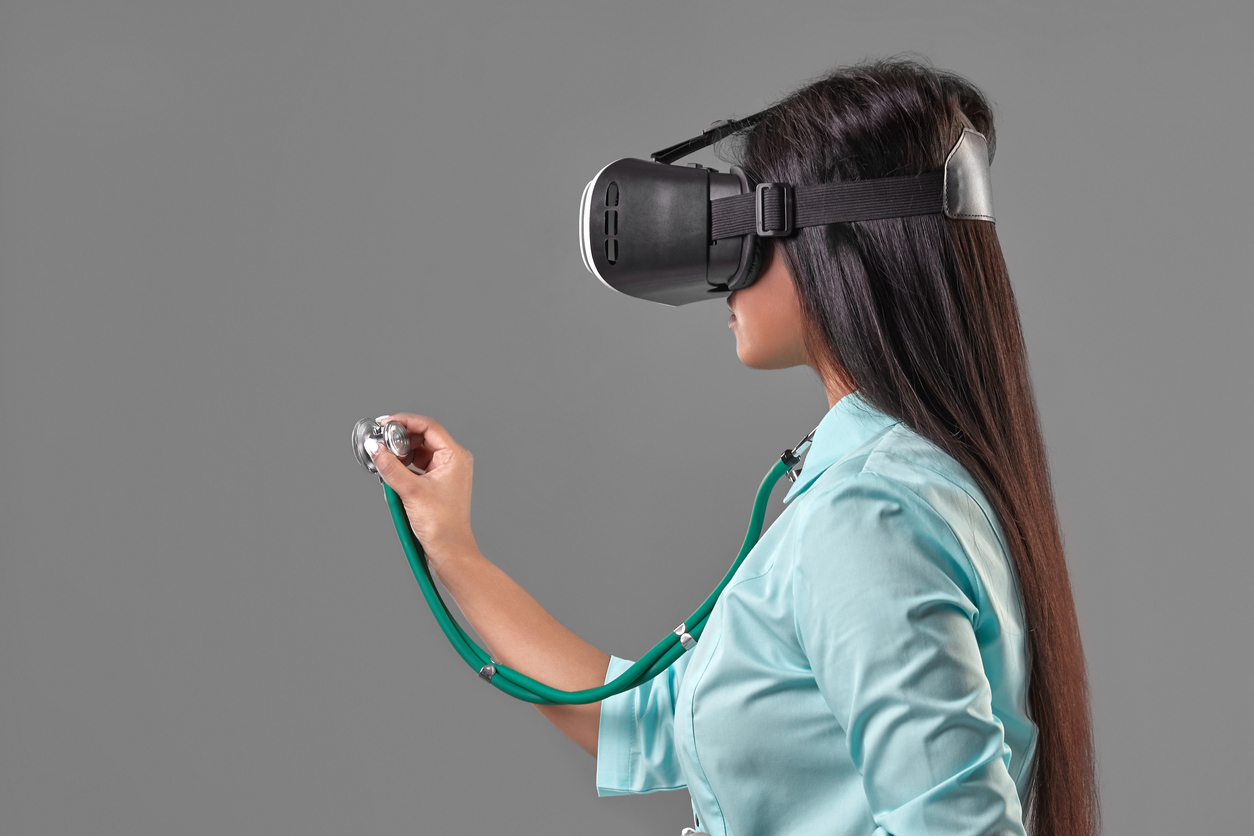
Learn how VR wearables in training programs improve safety, efficiency, and confidence while reducing errors, costs, and training time.
When it comes to virtual reality, VR training has become a big business. Nielsen’s SuperData research estimates that over 70% of companies that have adopted VR are using it for training purposes.
It’s working.
IDC surveyed companies that use VR training tools and they agreed on the key benefits, including:
- Increased worker efficiency
- Improve knowledge transfer
- Reduced worker errors
- Improved real-time collaboration
PwC research shows that VR learners are 275% more confident in applying skills after VR training and complete training four times faster than in traditional classroom settings.
VR Training Programs
One of the big advantages of using VR for training is that employers can place workers in highly detailed scenarios and simulations—without putting employees at risk, tying up equipment, or shutting down their facilities.
For example, pilots use VR training programs routinely. A flight simulator can create an immersive experience that models the cockpit and responds to users’ actions without the need for expensive flight time.
Police and firefighters can use VR training tools, such as AR VR wearables, to test their ability to recognize and react appropriately during dangerous situations that would be impossible to replicate in the real world.
VR wearables are also being used in other situations where safety is a concern. For example, assessing workplace dangers in construction sites or training inspectors on what to look for in mines or operate drones.
Medical training is another area that uses AR, VR, and mixed reality (MR). Surgeons can walk through procedures with a virtual patient before performing complicated surgeries. Haptic simulators provide tactile feedback for an even more realistic experience.
VR Wearable Technology
Starting in 2017, Walmart began using VR headsets in training centers to evaluate worker skills and improve results. For Walmart, it isn’t so much a safety issue as is downtime. Stores open 24 hours don’t allow workers to train after hours. While training in stores can be disruptive to customers or customers can interrupt training on the floor, VR training allows management to create scenarios that they wouldn’t be able to replicate easily.
Think about what it’s like for a Walmart employee on Black Friday when crowds are surging in a store. With VR training, employers can test their workers on how they deal with crowds or angry customers.
In the first few years, over 1.2 million Walmart employees used VR tech for skills management assessments. More than 4,600 stores are expected to adopt the training strategy using VR headsets as well. Walmart hopes to replicate the experience at the training academies remotely to avoid the expense of travel and lodging to send management trainees to the training center.
Other businesses are adopting AR and VR wearables for training.
- UPS trains delivery drivers to avoid road hazards
- ExxonMobil tests employees on the loading dock of tankers
- BP trains on emergency procedures at oil refineries
- AST uses VR training to certify heavy equipment operators
- Boeing trains operators on parts assembly and installation
Walmart says AR/VR training provides more engagement, reduces training time, and has improved post-test scores between 5% and 10%. Other Fortune 500 companies using VR for education and training are reporting an increase in productivity and retention rates.
VR training has another significant advantage. Not only can AR/VR train employees, but it can amass a significant amount of data that can be used to assess performance to refine skills. This data can also be used to evaluate and improve training methods for future use.
AR/VR Wearables Increasingly Used for Training
AR/VR training is becoming commonplace, especially in industries and occupations where safety is a concern. Companies are also using AR and VR tools for onboarding, compliance, testing, prototyping, troubleshooting, and quality control.
VR training programs are tackling more than just hard skills. Walmart is using VR wearables to assess employees for middle management positions. Other businesses are using the tech to upskill workers, teach leadership and resilience, and change management.
Share this Article:



